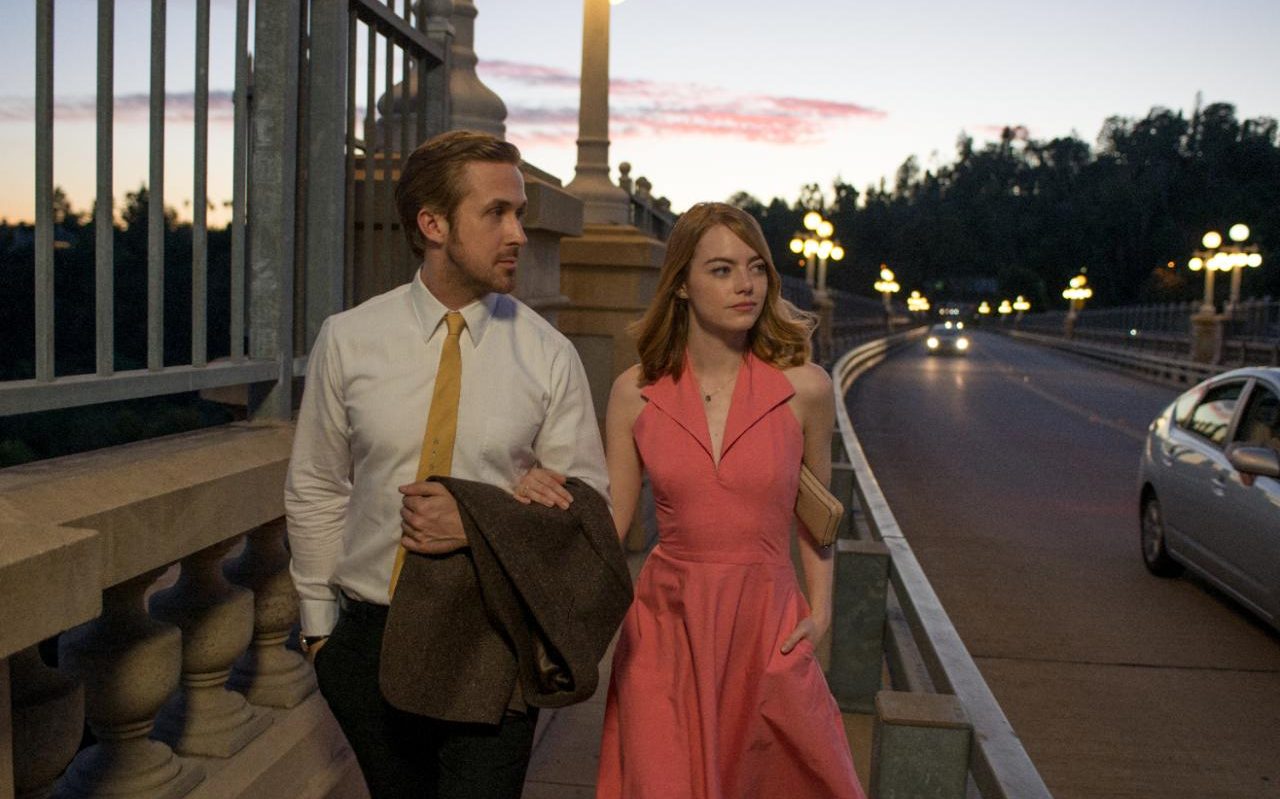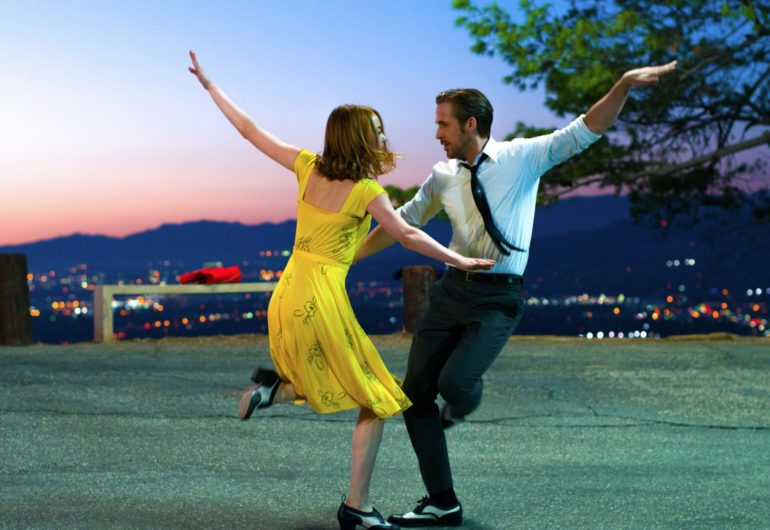In an age when so much mainstream cinematic output seems to follow a pattern based around franchises, with the intent of minimising risk, we end up relishing those few films that wear their effort and craftsmanship with pride. La La Land is one such film; it has sequences and scenes of such sweep, colour and energy that it couldn’t but have been made by a team committed to delivering the best possible film. Such professionalism is a joy to watch.
With his follow-up to his acclaimed debut Whiplash, writer/director Damien Chazalle has gone for broke on something very different to his entertaining but surreptitiously conventional first feature. La La Land knows and acknowledges its influences, and channels them into something at once modern and old-school. Here’s a musical in the vein of Stanley Donen, into which are woven modern stylings and technologies. Characters use smartphones and drive Toyota Priuses, but the emphasis is on the traditional methods and choices that made these stories stick out. The windswept romance of Mia (Emma Stone) and Sebastian (Ryan Gosling) is played out in colours that set mood, and in camera moves that show off the world into which much effort has been poured to create. The production is as much a star as its two leads, chiefly because they’re all focused on telling a simply lovely little love story.
Chazalle lays down his gambit with the opening scene, a musical number staged on a Los Angeles highway choked with traffic. Amidst so much digital trickery and post-production gloss, it’s a delight to watch a scene whose methods confound you. The camera moves, choreography and blocking seem beyond rehearsal, yet it’s executed with a vivacity little seen onscreen these days. The setup is an echo of Singin’ In The Rain, with both Mia and Sebastian pursuing creative dreams in the City of Angels. Yet the film also comes with Donen and Kelly’s sense of energy, fun and positivity. Even when the film takes some dramatic twists and turns, the memories will be positive. Walking along a dusk-backgrounded pier, Gosling whistles a vaguely melancholic tune that becomes a recurring soundtrack leitmotif. You will almost certainly find yourself whistling it for days afterwards.

As Mia and Sebastian’s relationship begins to blossom, you may already see the warning signs ahead as their respective creative careers also begin to take off. (Emulate classic musicals as it might, La La Land has nods to the less positively romantic likes of Casablanca and Vertigo). Between emotional travails and many a musical number, the abilities of Gosling and Stone are truly put to the test, as both show off dance moves and singing voices you may not have expected. Stone is able to convey shifts in emotion with little more than the flicker of an eye; the camera and all eyes are trained on her whenever she’s on screen, such is the magnetism she brings. Gosling puts his quiet smouldering charm to best use, blending his bashful smirk with lightning speed as he runs his fingers across the ivories like his life depends on it. It’s bliss to watch this pair together, and they’re ably supported by a cast overloaded with charisma (Rosemarie DeWitt and John Legend are damn good value, and J.K. Simmons can actually smile in a non-threatening manner).
Though a prerequisite for a director attempting such a film, Chazalle has a clarity of vision that ensures the camera is rarely still, but always considerate. Smaller moments are afforded the same thought and energy as the grandest musical number. And oh! What musical numbers they are. L.A. becomes a swooning backdrop to hummable, toe-tapping beats from composer Justin Hurwitz and songwriters Benj Pasek and Justin Paul. The likes of ‘A Lovely Night’ and ‘The Fools Who Dream’ evoke memories of classic musical number simply through their sharp, heartfelt instrumentation and lyrics. La La Land may have the contours of Demy and Legrand, but it’s smart and joyous enough to become its own distinct entity. La La Land is a dream for we fools who dream.

